Discover 11 hidden attractions, cool sights, and unusual things to do in Westfield (United States). Don't miss out on these must-see attractions: Grandmother's Garden at Chauncey Allen Park, Hampton Ponds State Park, and Joseph Dewey House. Also, be sure to include Great River Bridge in your itinerary.
Below, you can find the list of the most amazing places you should visit in Westfield (Massachusetts).
Table of Contents
Grandmother's Garden at Chauncey Allen Park
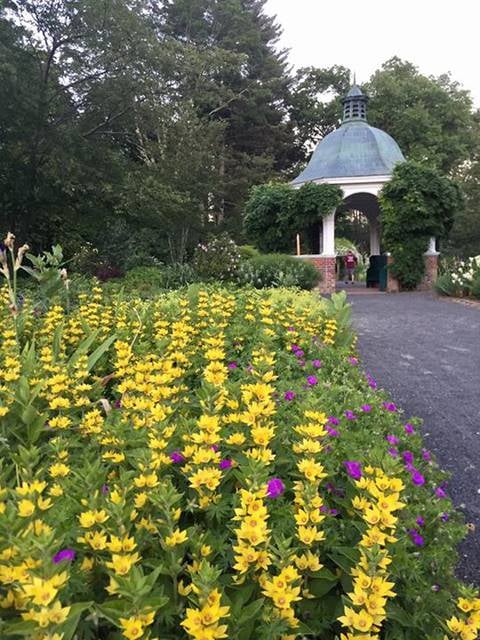
Park, Garden, Relax in park
Address: Smith Avenue, Westfield (Wesfield)
Hampton Ponds State Park
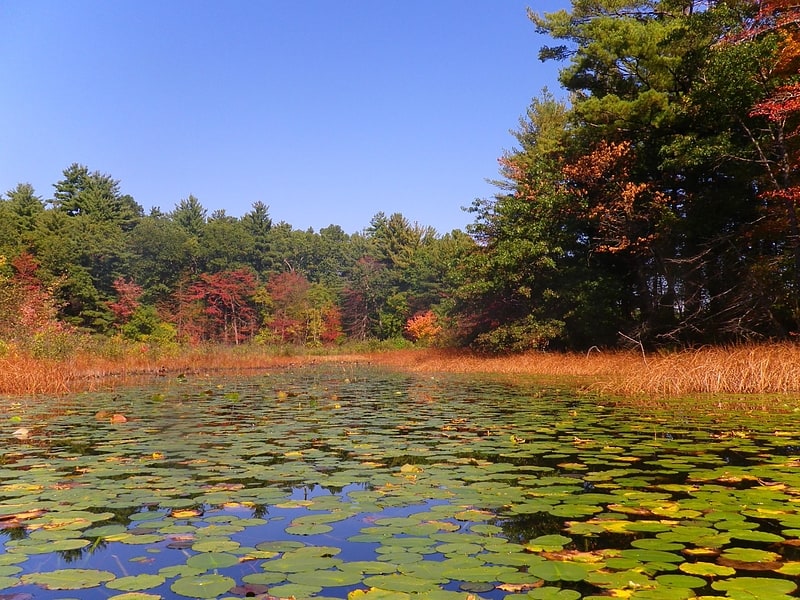
State park in Westfield, Massachusetts. Hampton Ponds State Park is a Massachusetts state park located in the northeast corner of the city of Westfield. The park offers water-based activities including swimming, motorized and non-motorized boating, and fishing plus facilities for picnicking. The park is managed by the Department of Conservation and Recreation.[1]
Address: 1048 N Westfield Street, 01085 Westfield (Wesfield)
Joseph Dewey House
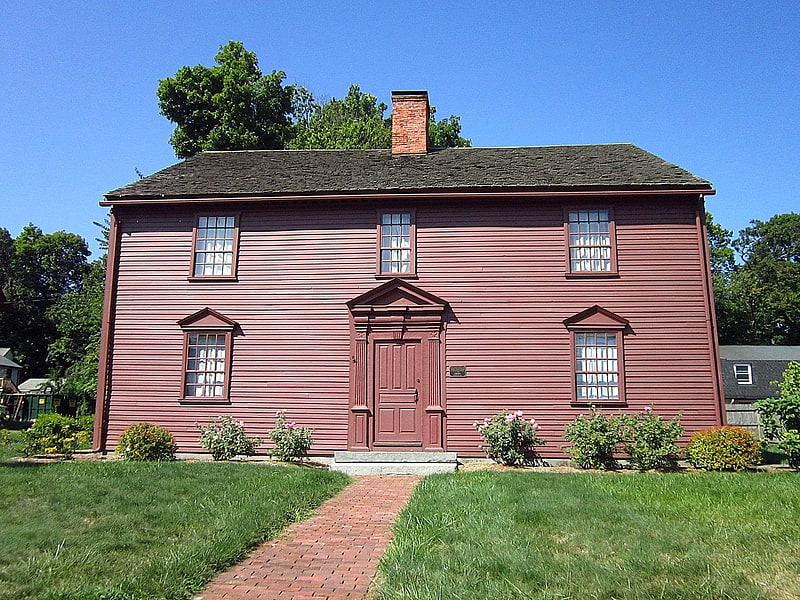
Building in Westfield, Massachusetts. The Joseph Dewey House is a historic house museum at 87 South Maple Street in Westfield, Massachusetts. Built about 1735, it is one of the city's few surviving pre-Revolutionary buildings. It is now maintained as a museum property by the local historical society. The property was listed on the National Register of Historic Places in 2001.[2]
Great River Bridge
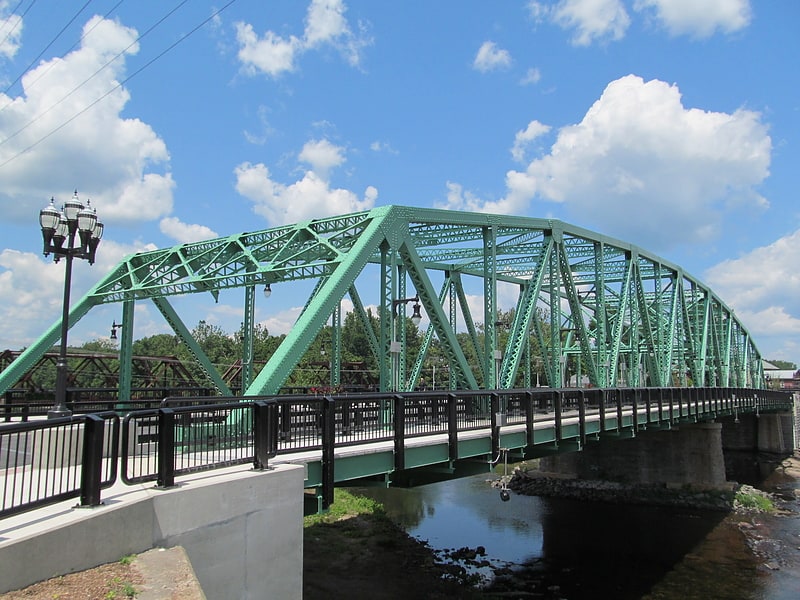
Truss bridge in Hampden County. The Great River Bridge in Westfield, Massachusetts, is a pair of camelback truss spans over the Westfield River carrying US 202 / Route 10. The original bridge was completed in 1939, and a second bridge was finished in 2009.[3]
Mechanic Street Cemetery

Cemetery in Westfield, Massachusetts. The Mechanic Street Cemetery is a historic early cemetery on Mechanic Street in Westfield, Massachusetts. The 4-acre cemetery is the city's oldest, with the oldest documented grave dating to 1683. It was used as a burying ground until the late 19th century, although its use began to decline in the middle of the century, with the advent of the popular rural cemetery movement, which was reflected in Westfield with the establishment of the new Pine Hill Cemetery in 1842. No burials were recorded in the 20th century. Although the cemetery has been subjected to some maintenance work, it continues to suffer the effects of vandalism and weather. The cemetery was listed on the National Register of Historic Places in 2002.[4]
United States Whip Company Complex
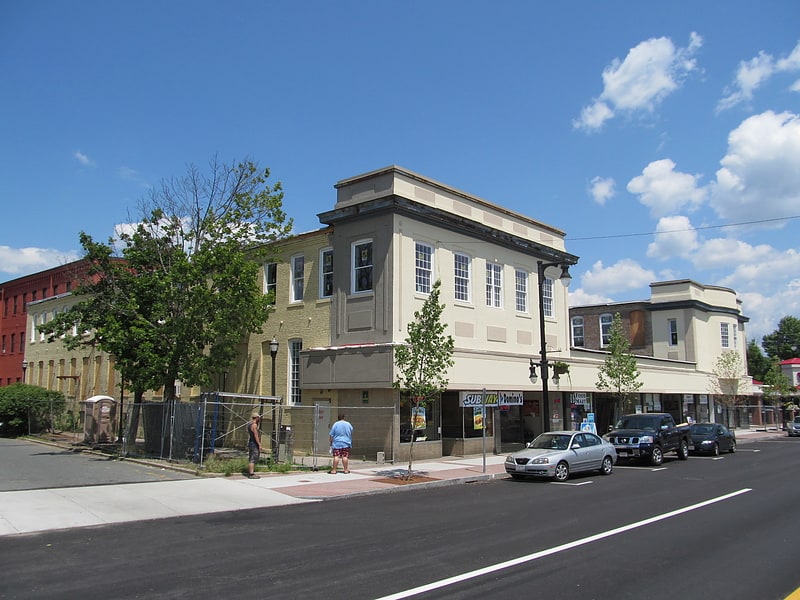
Factory in Westfield, Massachusetts. The United States Whip Company Complex or "United States Line Company Complex" is a historic factory located in Westfield, Massachusetts. It was owned and operated by one of the whip-making businesses that led Westfield to become widely known as "Whip City". United States Whip, created in 1892 by the consolidation of several local manufacturers, was the world's largest manufacturer of whips. The factory complex was listed individually on the National Register of Historic Places in 1983, and as part of an expanded Westfield Center Historic District in 2013.[5]
H. M. Van Deusen Whip Company
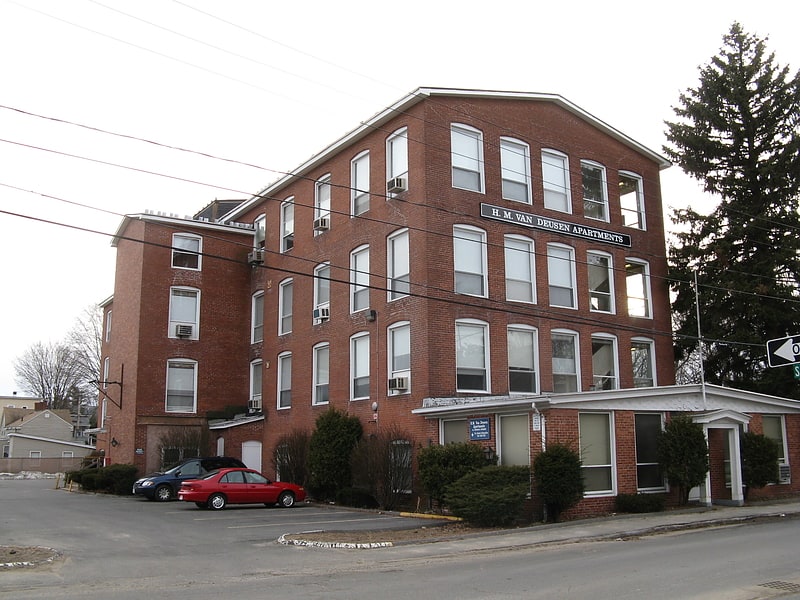
Building in Westfield, Massachusetts. The H. M. Van Deusen Whip Company is an historic factory building at 42 Arnold Street in Westfield, Massachusetts, USA. Built in 1917, it is the last purpose-built whip factory to be built in Westfield, which was nationally known as "Whip City". The building, used until 1930 for whip production, was also somewhat retardaire in design, using late 19th-century construction methods. The building was listed on the National Register of Historic Places in 1987.[6]
Octagon House
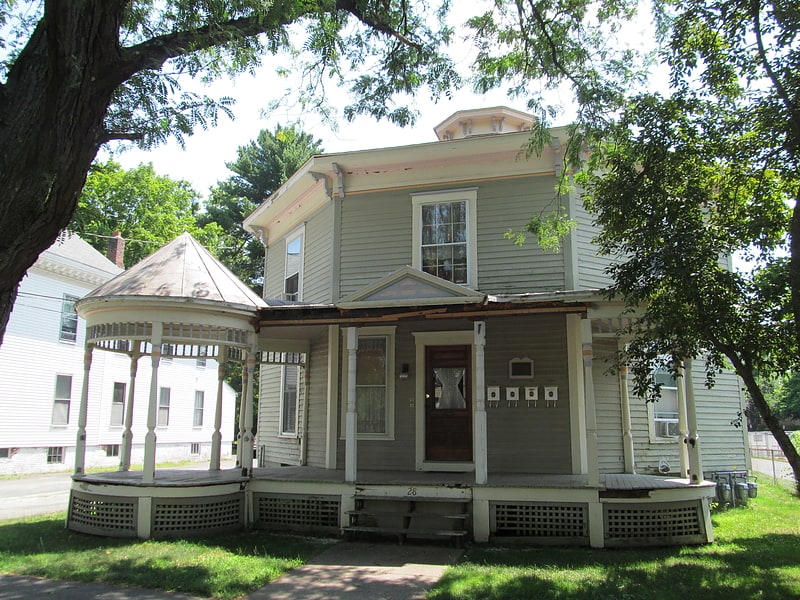
The Octagon House is an historic octagonal house located at 28 King Street in Westfield, Massachusetts. It was built sometime between 1858 and 1864 by Joseph Watson, and is the only one of three 19th-century octagon houses built in the city to survive. The house was listed on the National Register of Historic Places in 1982, and included as part of expansion of the Westfield Center Historic District in 2013.[7]
Sanford Whip Factory

The Sanford Whip Company is a historic factory located at 330 Elm Street in Westfield, Massachusetts. Built in 1883, it was owned and operated by one of the whip-making business that led Westfield to become widely known as "Whip City". The building for many years housed a novelty toy manufacturer after the market for whips declined in the early decades of the 20th century. The factory was listed individually on the National Register of Historic Places in 2008, and as part of an expanded Westfield Center Historic District in 2013. It has been converted into affordable housing space.[8]
Prospect Hill School
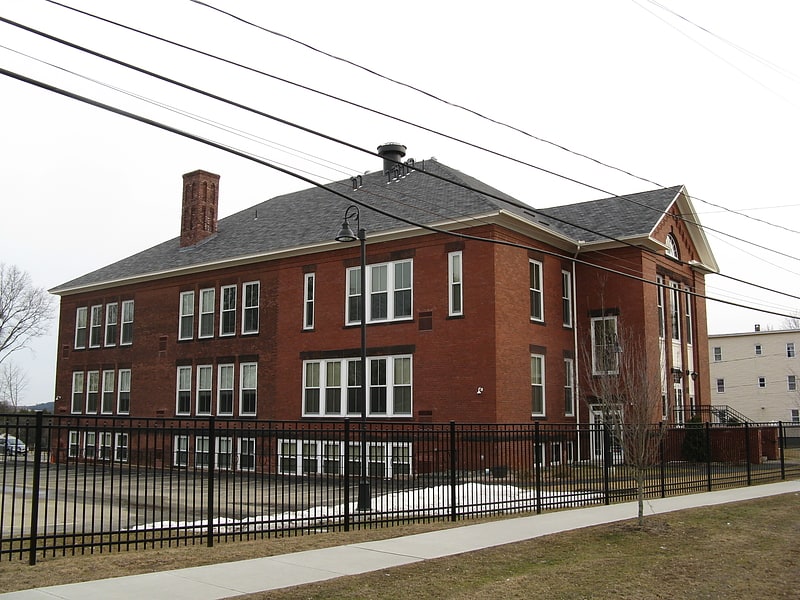
Building. The Prospect Hill School is a historic school building at 33 Montgomery Street in Westfield, Massachusetts. The Colonial Revival school was built in 1897 to a design by Augustus W. Holton. The school was built on the site of an earlier wood-frame school which was no longer adequate to support the school district's growing student population. It is made of red brick with white sandstone detailing. The hip roof was originally slate, but is now asphalt shingles. The school when it opened had eight schoolrooms and served 300 students. It represented the beginning of a change in the Westfield schools from wood-frame schoolhouses to modern buildings.
With the town's student population growing, the school was expanded in 1919. The expansion retained the Colonial Revival style of the building, even though it gave it a completely new facade. Designed by Malcolm B. Harding, the addition included two more schoolrooms and an auditorium. The school continued to serve the town until 1991, when, after a wave of construction of new schools, the Prospect Hill School was declared obsolete and closed.
The property then lay vacant and unused for fifteen years, despite numerous proposals for its use. The town finally accepted a proposal in 2005 to convert the school into an affordable housing complex. The school was listed on the National Register of Historic Places in 2008.[9]
State Normal Training School
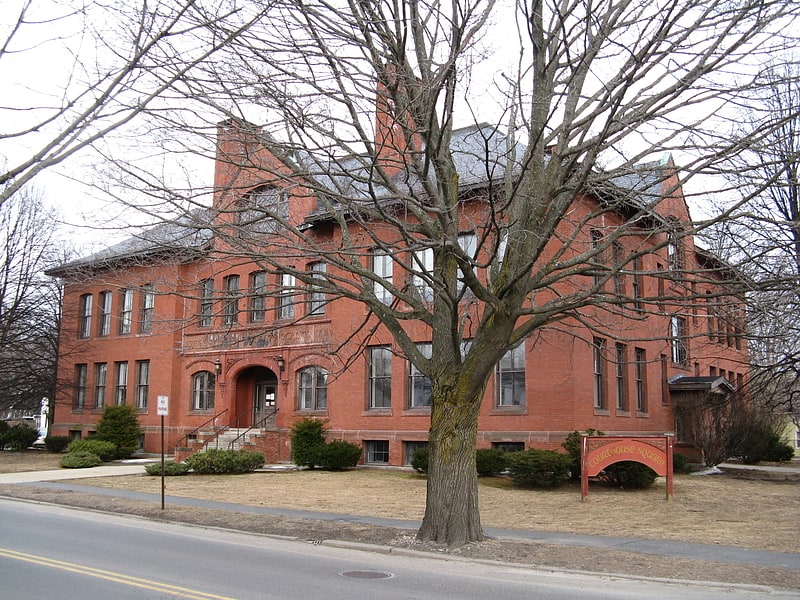
Building in Westfield, Massachusetts. The State Normal Training School is a historic training school building at 27 Washington Street in Westfield, Massachusetts. It was constructed in 1899 to provide a teaching facility for teachers-in-training who were students at the Westfield State Normal School, the second-oldest such school the nation. It was operated jointly by the normal school and the city of Westfield from 1900 until 1956, at which point it was converted into a regular elementary school. The city formally acquired the property in 1977. It was listed on the National Register of Historic Places in 1983. The building now houses apartments, and is known in the community as Courthouse Square.[10]